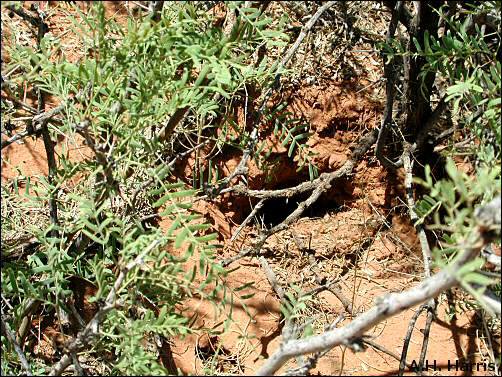

We hear much about basic human needs, such as food and shelter. But such things are not limited to mankind, being universal requirements for survival of individuals and species. Our desert rodents share these needs, of course, and one necessity is for security. Most rodents dig burrows for daytime protection and as night-time bolt-holes for escape from predators. Burrows also serve the needs of those who store seeds or other foods for later use.
Unfortunately, from the rodent viewpoint, several predators, such as
coyotes and badgers, are quite willing to expend the energy to dig out a burrow system
if there's the potential for a meal. This being the case, burrowers tend to protect
their burrows as best they can, making excavation as difficult as possible. Thus, most
burrow openings are not out in the open, but under or between rocks in the mountains
and foothills, and in the midst of dense shrubbery out in the sandy bolsón. We say a
man's home is his castle; also true for mice, complete with the fortifications
intrinsic to real castles.

Contributor: Arthur H. Harris, Laboratory for Environmental Biology, Centennial Museum, University of Texas at El Paso.
Desert Diary is a joint production of the Centennial Museum and KTEP National Public Radio at the University of Texas at El Paso.

A rodent burrow is protected within the mesquite of a mesquite hummock, Tularosa Basin, New Mexico. Photograph by A.H. Harris.